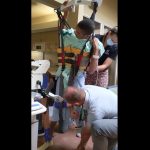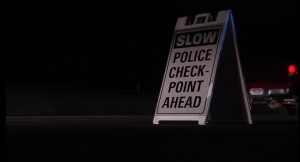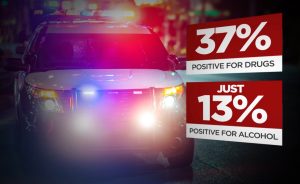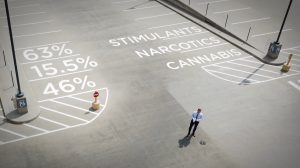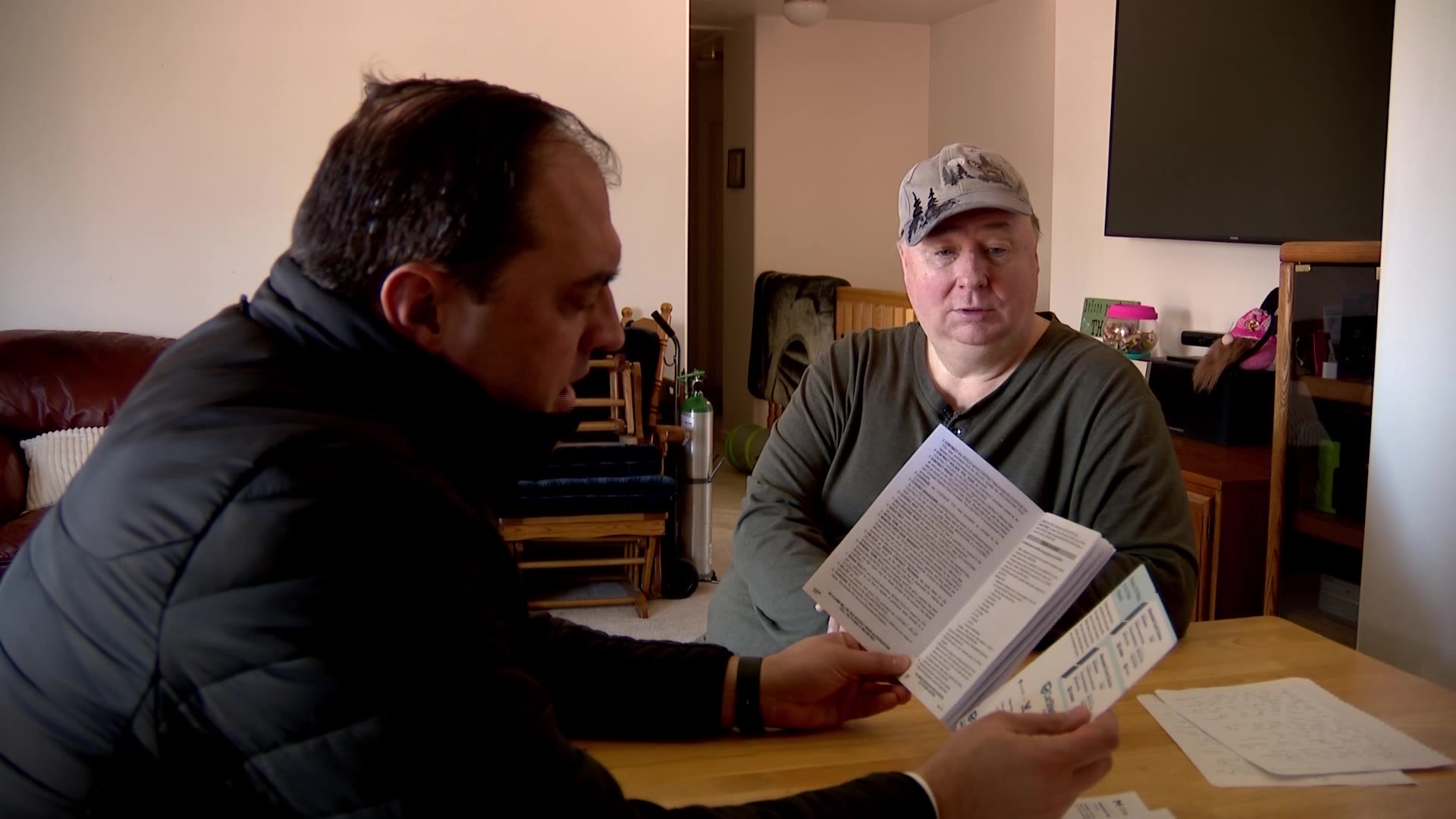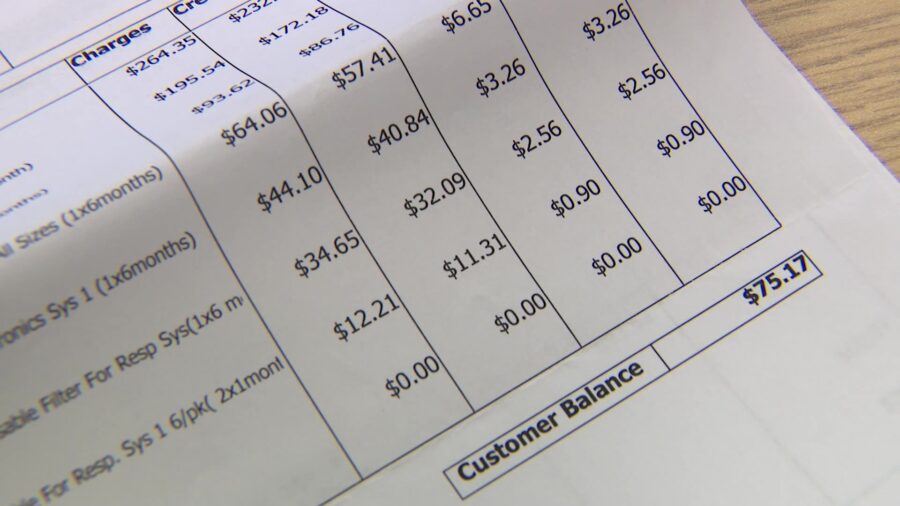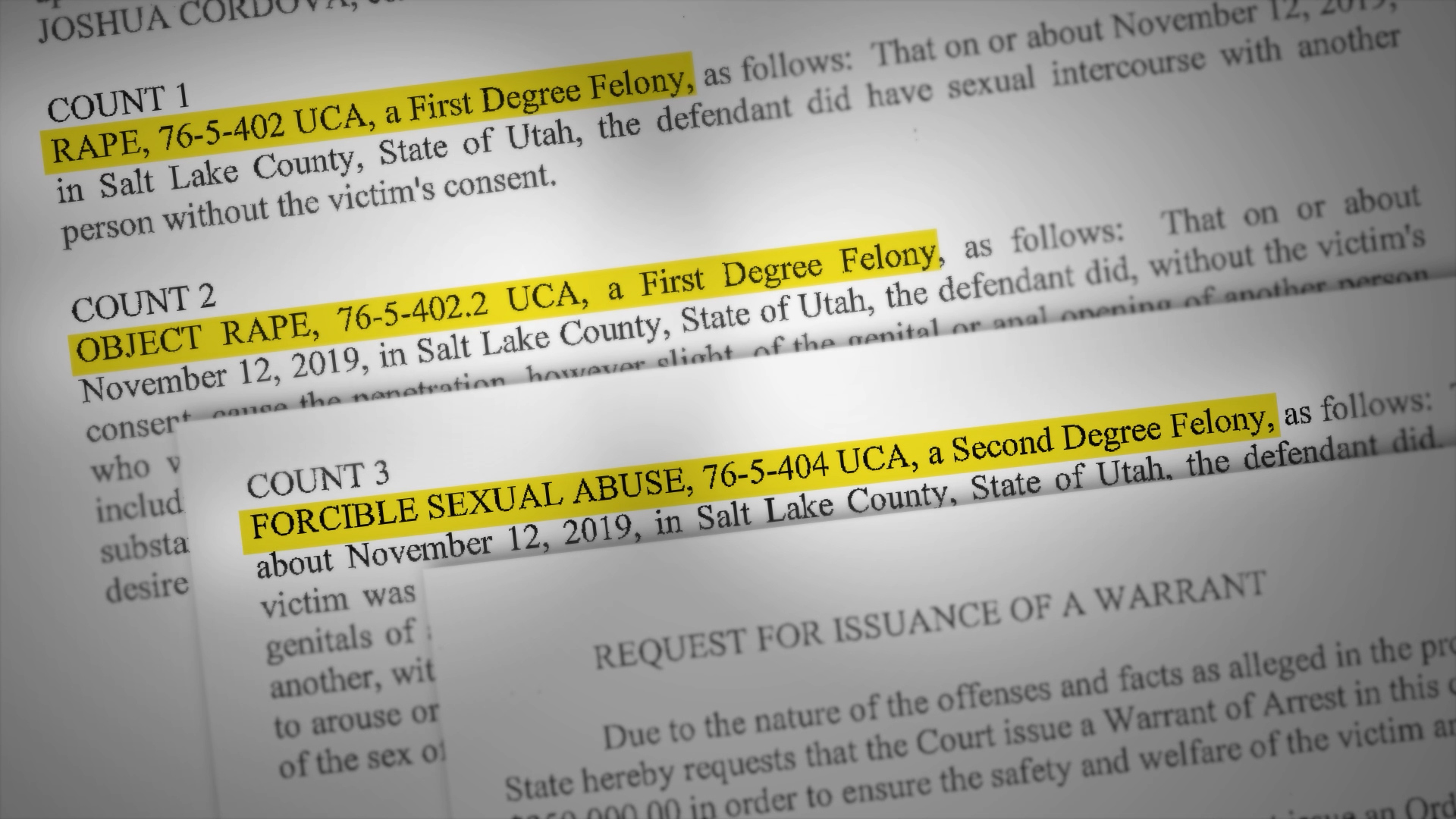A devastating crash. A drug-positive driver. Why did it take over a year for charges?
Jul 15, 2022, 7:34 AM | Updated: 10:55 am
SALT LAKE CITY — The night of May 8, 2021, would forever change Casey Walker’s life.
The nearly-20-year-old was out for a ride on a motorcycle in South Jordan when he was hit from behind by a passenger car.
“The police officer told me that they’ve taken Casey to the hospital, and they’re gonna do everything they can to give him a chance,” recalled Casey’s father, Doug Walker.
Casey was in bad shape. Police who arrived on scene found Casey unconscious and not breathing. Casey’s mom, Deanne Walker, remembered the calls coming to their Kansas City home from law enforcement and doctors did not seem hopeful.
“They had told us that we needed to get somebody there immediately,” she said, “because they didn’t expect him to live.”
The Walkers rushed to catch an early morning flight to Utah. When they arrived, Casey was in a coma, in which he would remain for 20 days. He suffered a traumatic brain injury, paralysis on his left side and lost all memory of the crash.
Casey would live, and after months of recovery, he’s still actively trying to heal these wounds.
“It’s like a newborn baby,” Casey explained, “just having to learn everything again.”
A positive toxicology report — but delayed charges
While the Walkers have focused on healing Casey, the South Jordan Police Department focused its attention on the driver who hit him.
The police report listed Shane Russell Berry as the driver of the car that hit Casey.
According to the statement given to the officer on scene, Berry indicated he was driving westbound on 11400 South toward River Front Parkway, “going the speed limit 45 mph.” Berry claimed he “never took his eyes off the roadway and then all of a sudden he saw a motorcycle with a driver in front of him.”
Berry told the officer he braked and attempted to swerve but hit the motorcycle. He immediately “ran over to the motorcycle driver.”
The officer’s report noted he asked Berry for a “blood draw.” Berry consented, and a paramedic on scene took “two vials of blood.”
Later, when Berry requested to retrieve some items from his car, the officer noticed “a glass pipe,” which he recognized as paraphernalia “for methamphetamine use.” The officer requested a K-9 unit, which indicated on the vehicle, according to the report.
Berry was not arrested that night.
It was not the first time Berry allegedly had a run-in with police related to drugs.
A search of court records by KSL Investigators found four times Berry had been sentenced on drug-related charges in the last 20 years, most recently in 2019.
Looking at the probation progress report from his probation officer in March 2020, Berry was deemed “high” risk for alcohol or drug problems.
The report detailed positive progress for Berry: he completed residential treatment, community service and had reported clean drug tests.
A clean drug test did not appear after the crash. South Jordan Police said they received the final toxicology report on July 6, 2021. According to charging documents, Berry had “582 ng/mL of methamphetamine and 74 ng/mL of amphetamine” in his system the night of the crash.
“There was some very clear evidence that this guy was high on drugs,” said Doug.
Charges wouldn’t come until 416 days after the crash. The Walkers expressed frustration and confusion that they were not immediately filed.
“The police officer on scene was pretty clear that this was going to be a DUI,” said Doug. “From what we can tell, this driver has not paid any price whatsoever.”
‘We’re going to get one shot at it’
KSL Investigators reached out multiple times to the Salt Lake County District Attorney’s Office between December 2021 and June 2022 to check the status of the Walker/Berry case. We were told the DA’s office was working on it.
Eventually, charges were filed against Berry on June 28, including one second-degree felony charge of driving with measurable controlled substance, one misdemeanor charge of possession of drug paraphernalia, and an infraction for operation of unsafe or improperly equipped vehicles.
Berry is scheduled to be arraigned on these charges on July 28.
Salt Lake County District Attorney Sim Gill said the delay in charges was partially a mistake.
“Due to an error on our own part, it didn’t get immediately filed,” said Gill.
He explained the case was screened with his office in August 2021. At that point, it was declined and sent back to South Jordan Police for more evidence.
That evidence, an Interactive Driver Research Response (IDRR) report, wasn’t something South Jordan Police had been trained on yet, according to Deputy Chief Jason Knight.
“At this point,” Knight wrote, “the Traffic Reconstructionist has never been asked to do an IDRR and did not know what it was and had to research it.”
After some back and forth with the DA’s office for clarification, and training on IDRR software, the report was provided in March 2022.
Gill said the case got a green light for prosecution. Then the assigned prosecutor quit and the case got lost in the shuffle.
It wasn’t until an internal audit by the DA’s office in June that it was rediscovered, and charges were filed.
“It happens sometimes,” said Gill. “I mean, these are mistakes that happen. We screen 17,000 cases every year.”
According to data obtained by KSL Investigators, Gill’s office processes around a thousand cases of DUIs — both alcohol and drugs — per year. We calculated the average time between screening and filing with the courts to be about 19 days.
Between Jan. 1, 2018, and May 15, 2022, the DA’s office had declined and sent back cases for further investigation 234 times.
Regardless of the mistake, Gill explained crashes involving drugs can be more complicated and can take more time to gather evidence.
“When there are drugs involved, sometimes those telltale signs are not there and the impairment may not be there,” said Gill.
Impairment, Gill explained, is often revealed by other conditions surrounding the crash, making reconstruction a major piece of evidence for prosecutors.
That reconstruction and IDRR report would be referred to in charges filed against Berry.
According to charging documents, police had towed Berry’s vehicle to a police evidence lot for inspection and found “the vehicle’s outer right rear brake pad had failed due to its inability to slide because the calipers had been heavily painted.”
The IDRR report “concluded that the average driver would have been able to avoid the crash by either steering or braking,” pointing out that “87.5% of drivers could have successfully avoided the collision.”
Gill credited his office for taking more time to gather more supporting evidence. “We know we’re going to get one shot at it, and we want to do it right,” he said. “We want to do our very level best and advocating that for that victim or that family.”
Driving with a measurable controlled substance in Utah is considered a misdemeanor charge. Gill said the additional factors in this crash — like Casey’s serious injuries — enhanced it to a second-degree felony.
Drug-positive doesn’t always mean drug-impaired
This case is now a statistic of a serious issue in Utah.
According to data from the Department of Public Safety Highway Safety Office, drivers in 37% of all fatal crashes in 2021 tested positive for drugs. That’s compared to 13% of drivers in all fatal crashes that year testing positive for alcohol.
When they looked at numbers for all DUI tests throughout the state in 2021 — not just crashes — drugs popped up 66% of the time compared to 34% of tests coming back positive for alcohol only.
Lynda Hansen, impaired driving program manager for the Utah Highway Safety Office, said those drug statistics come with a big caveat.
“They test for all types of drugs, including over-the-counter medications like Tylenol,” said Hansen. “Those are all going to show up as drug-positive.”
Hansen shared the statistics of which drugs were found in systems of drug-positive drivers in fatal crashes last year. Totals do not equal 100%, due to some drivers having more than one drug in their systems.
Forty-six percent of tests came back positive for cannabis, 15.5% for narcotics, 36.6% for depressants, 63% for stimulants and 5.5% for other drugs.
Meth counts as a stimulant. So does over-the-counter allergy medication.
“With drugs, there’s not really a way, like scientifically right now, that we can measure impairment in anybody, because all drugs are different and every person is going to metabolize those drugs differently,” Hansen explained.
That challenge alone is one of the reasons the DA’s office said these types of cases take more time to sort out. More time for prosecutors, law enforcement and for victims’ families seeking justice.
“There is no understatement in expressing how difficult this is, how difficult it’s been,” said Deanne, “and the price that every member of this family has had to pay.”
KSL Investigators reached out to Shane Berry for comment on this crash but did not receive a response.
Have you experienced something you think just isn’t right? The KSL Investigators want to help. Submit your tip at investigates@ksl.com or 385-707-6153 so we can get working for you.



